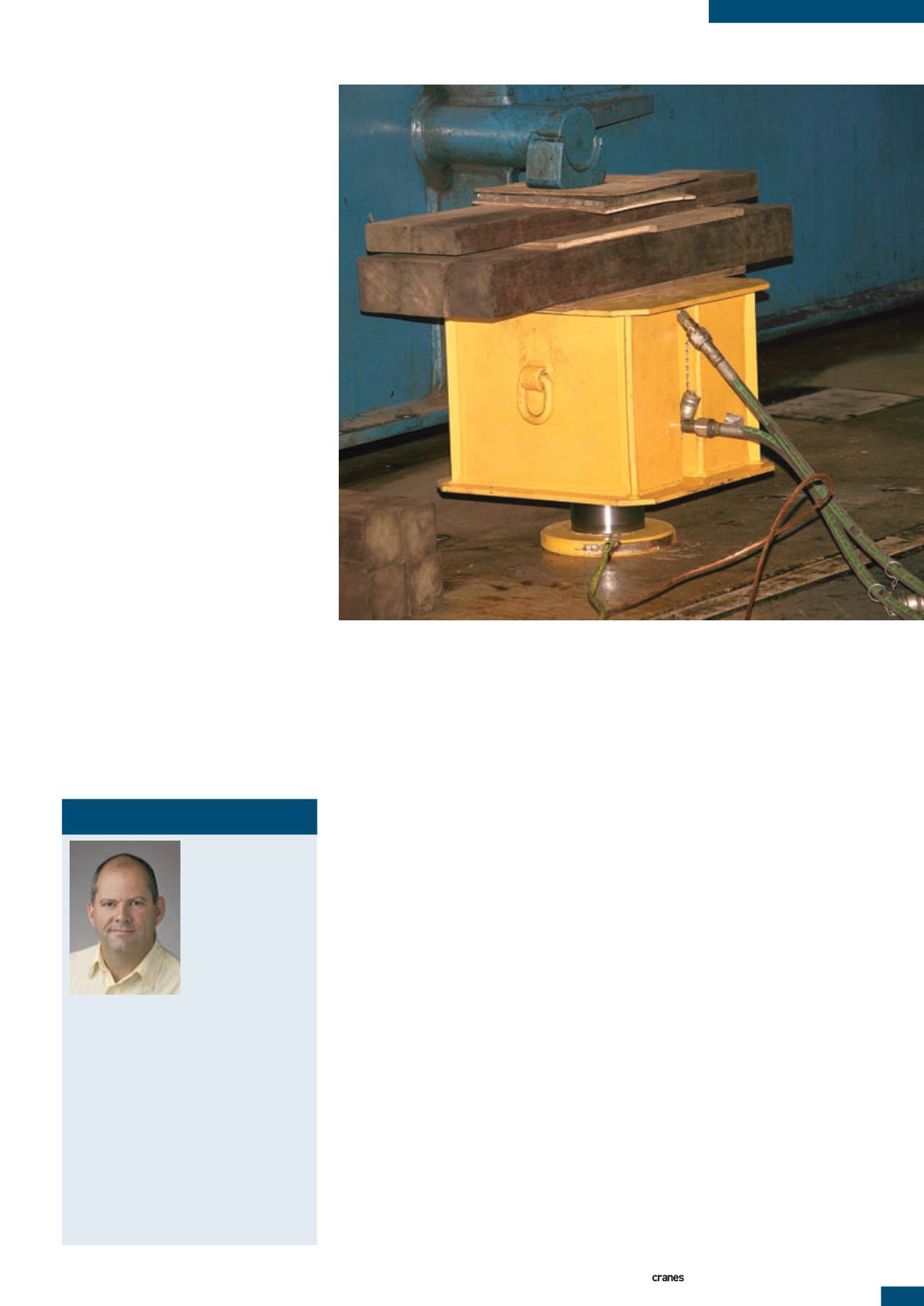
INTERNATIONAL AND SPECIALIZED TRANSPORT
■
NOVEMBER 2013
THE KNOWLEDGE
37
Alternative lifting
Last month’s article
covered a number of
alternative moving
techniques, including
rolling, skidding, airbags
and air pallets. This
month attention turns to
some alternative lifting
methods. MARCO VAN
DAAL reports
NOTE:
This example created the impression
that a higher capacity can be achieved by
applying additional pressure to the jack.
In principle this is correct, although the
internal seals of the jack are designed for
a maximum pressure that determines
the capacity of the jack. Exceeding this
maximum pressure could result in
seal damage.
If the load is to be lifted by more than
one stroke of the jack, a cribbing (a pile of
neatly stacked hard wood or steel beams)
is to be placed next to the jack. The ram of
the jack is then retracted and the load now
rests on the cribbing. The elevation of the
jack is raised by placing it on yet another
cribbing and the load can be lifted another
stroke. It goes without saying that this is a
very labour intensive way of lifting a load,
especially if this load is to be raised to a
significant height.
New ideas
Thanks to the guys in our industry
who do this work on a daily basis, an
innovative yet simple solution to make
this type of work a lot less labour intensive
was created. A regular hydraulic jack
ABOUT THE AUTHOR
Marco van Daal has
been in the heavy
lift and transport
industry since
1993. He started at
Mammoet Transport
from the Netherlands
and later with Fagioli
PSC from Italy,
both esteemed companies and leading
authorities in the industry. His 20-year
plus experience extends to five continents
and more than 55 countries. It resulted
in a book The Art of Heavy Transport,
available at:
of-heavy-transport/
Van Daal has a real passion for sharing
knowledge and experience – the primary
reason for the seminars that he frequently
holds around the world. He lives in
Aruba, in the Dutch Caribbean, with his
wife and daughters.
T
he simplest of lifting methods is the
use of a hydraulic jack. A hydraulic
jack consists of a cylindrical housing
in which a ram can move up and down.
The ram moves up under the influence
of oil that is pumped into the cavity
underneath the piston in the cylinder. As
it moves upwards the ram protrudes from
the top of the jack and raises the load.
Hydraulic jacks, like every other piece
of equipment, follow certain laws of
nature:
A jack’s capacity can be determined by the
F = P * A equation, where;
F is the Force (or capacity) expressed in
Newton (N)
A is the area under the ram expressed in
square centimetres (cm
2
)
P is the pressure applied expressed in
newtons per square centimetre (N/cm
2
)
An example;
P = 5,000 N/cm
2
A = 150 cm
2
The capacity of the jack is therefore;
F = P * A = 5,000 * 150 = 750,000 N (or
roughly 75 tonnes)
Inverting a hydraulic jack allows it to be used
as a climbing jack when lifts of more than one
stroke length are required
>


